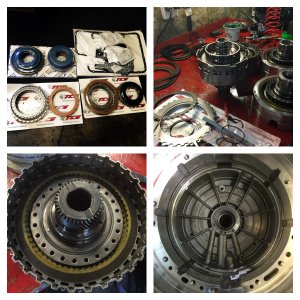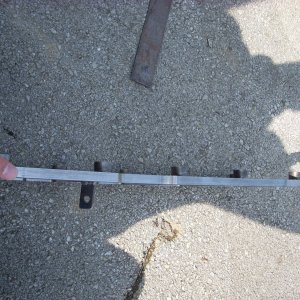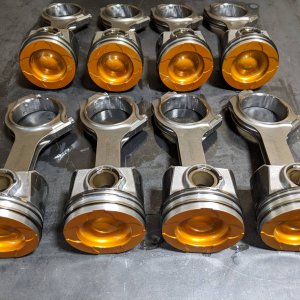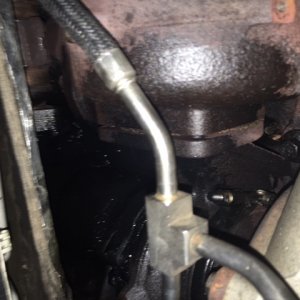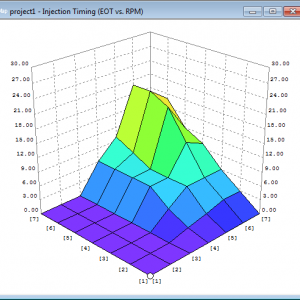Tom,
This is going to be a bit long in tooth but here is what I have gotten from my research into it all:
The very short answer IMO is: Most of the motivation and reasoning for the changes was from how the old system of testing was allowing for manipulation and had no standardization. You had two basic ratings: One Nominal and the other Absolute. The issue is neither of these were governed by any standard. It was up to the individual manf. or testing facility to decide. The reason for changes in performance ratings has to do with the above as well as for those that actually did follow tight consistent standard although not mandatory at the time was such as Donaldson and CAT (your example of prior 2 mic and now 4 mic) were using a different ratio as well as the changes in testing to include multi pass and averaging etc.
On to the detailed explanation:
The worst and least reliable of the two was Nominal. It honestly IMO is nothing more than a marketing influenced designation. A nominal rating is an arbitrary micrometer value given to the filter by the manufacturer. it is supposedly for some % that a filter was suppose to stop of a particular size particle. This is what I hate when I see as an example a Baldwin filter being sold as a 2 mic filter when it may only catch half those size particles and there is no way to know based on how many that are passing thru/ Is it 300 or 3 million is the filter @ what pressure and flow rate. Is it stopping them at 1gph or 200gph? See no standard and this allows for tons of variation. Tests have shown that particles as large as 200 microns will pass through a nominally rated 10-micron filter. So as you can see it just has no real value when you are looking for a filter that will stop next to all particles of a certain size.
Next was Absolute. This one is much more helpful yet still it has issues. But its a very easy to understand of its face. Basically it stops relatively all the partials larger than X. It end up being whatever the largest porous holes are in the media. The issue again is there was no standard on the conditions of the testing. Fluid used flow rate pressure temp etc..
This lead to the use of a Beta Ratio format This is a testing with clear standards and procedures. It will still give a absolute level rating as well as other % of ratings but by flowing standardize testing protocols. It basically is a test that gives you a rating of "downstream fluid cleanliness"
To test a filter, particle counters accurately measure the size and quantity of upstream particles per known volume of fluid, as well as the size and quantity of particles downstream of the filter. The ratio is defined as the particle count upstream divided by the particle count downstream at the rated particle size. Using the beta ratio, a five-micron filter with a beta 10 rating, will have on average 10 particles larger than five microns upstream of the filter for every one particle five microns or greater downstream.
Side Note: There is both Alpha and Beta Ratio testing. This has to do with the coarseness of the dust used. If AC coarse dust is used for
the test, the resulting values are called Alpha Ratios, if AC fine dust is
used the results are called Beta Ratios. We are dealing with very small micron sizes thus it will be Beta Ratios exclusively.
The efficiency of the filter can be calculated directly from the beta ratio because the percent capture efficiency is ((beta-1)/beta) x 100. A filter with a beta of 10 at five microns is thus said to be 90 percent efficient at removing particles five microns and larger.
Manf are the ones that dictate the Beta ratio min size particle tested but the generally applied standard is 200 or 99.5% see my link below for the chart.
I posted a link to a post I put up on the tech of how to translate a Beta Ratio value into real world performance numbers here:
Understanding Beta Ratio
This is a good solid system but it has weaknesses and hence the need for other testing protocols to supplement or combine with it. When used to compare other filters from other testing facilities they do not take into account actual operating conditions such as flow surges and changes in temperature. Further it does not give any indication of its dirt-holding capacity, the total amount of contaminant that can be trapped by the filter throughout its life, nor does it account for its stability or performance over time. These all important when comparing filter performance.
Hence this is was gets us to arrive at an official. standardize testing protocol that full incorporates beta ratio but address the other missing factors in filter performance:
ISO 16889:1999 Multi-pass Test Revised 2008
This gives it a total lab based testing protocol that is fully reproducible. It tests for not only for particulate removal efficiency (Beta Ratio) from a single pass but the average over multiple passes that takes into account pressure differential changes as the filter begins to fill. It further allows for not only a single absolute beta ratio but also an average ratio. This allows for a actual Filtration performance curve to be graphed that will clearly show a filters performance until that "max" differential pressure level is hit. At that point it would be considered to have reached its useful duty life.
The
Average Beta Ratio is arrived at by breaking down the test time into 10 time frame sections and then averaging those and graphing them based on dif pressure.
By referring back to the beta ratio curve graph a
Beta Stability Rate can also be calculated. By using that info you can have specific differential pressure level and beta ratio. This would allow you to know that a certain beta ratio will be maintains at that rate or better until that pressure level is reached/exceeded. Basically it will keep filtering at a certain rate until it the filter media get filled/clogged to that specific level. This is a very good figure as it would be helpful in establishing a pressure level point to change you filter at.
Finally a
Single Beta Ratio figure can be established for the test by summing the average upstream particle counts from each of the 10 time frames, and dividing this total by the sum of the average downstream particle counts from each of the 10 time frames. These values are then used to determine the particle size that would yield the average beta ratio of 2, 10, 75, 100, 200 or 1,000. Companies like Donaldson, CAT, and Champion tend to use the beta ratio of 200 as stated earlier. This then allows for a nice cross to a absolute ratings cross. As Absolute = 99%+ and Beta Ratio 200 = 99.5%
You then see how its possible depending on how the company had previously done its testing to establish its old absolute ratings that the numbers could be the same, very close, or quite different. Some such as Donaldson may have been working off a old standard beta ratio like for ISO 4572 which dictated beta ratio 75(98.6%) as standard and thus a lower mic rating compared to the revised ISO 16889 with a recommended standard of beta ratio 200.
Here is a helpful chart for Donaldson which shows the filter ratings @ beta ratios for the various media type and pore size they use:
Donaldson Filter Media Efficiency Ratings per ISO 16889 Test Standards
Referances:
International Organization for Standardization (ISO). (1999). ISO Standard No. 16889:1999.
Revised copy for 2008
Hydraulic fluid power filters - Multi-pass method for evaluating filtration performance of a filter element. Geneva, Switzerland.
Principles and applications of hydraulic filters. HYDAC Filtertechnik.
Scaglione, S. (1999). Summary of ISO 16889:1999. HYDAC Technology Corp.
ANSI (NFPA)T3.10.8.8 RI-1990 or ISO 4572 standards
Donaldson Filter Media Efficiency Ratings per ISO 16889 Test Standards
Filters and Filtration Handbook', T Christopher Dickenson, Elsevier, January 1, 1997
Understanding Filter Beta Ratios, Eric Ringholm, HYDAC Technology Corporation
16 SCHROEDER INDUSTRIES LLC The Multi-pass Test Filtration Ratio (Beta) ISO 4572 vs. ISO 16889
Filter Manufacturers Council Technical Service Bulletin 89-5R3, Revised October 2005
Determination of Filtration Performance of Industrial Filter Cartridges as Defined by Beta Ratio, by Thomas B O'Brien Ph.D. Director of Scientific Applications Support Services for 3M 1996

